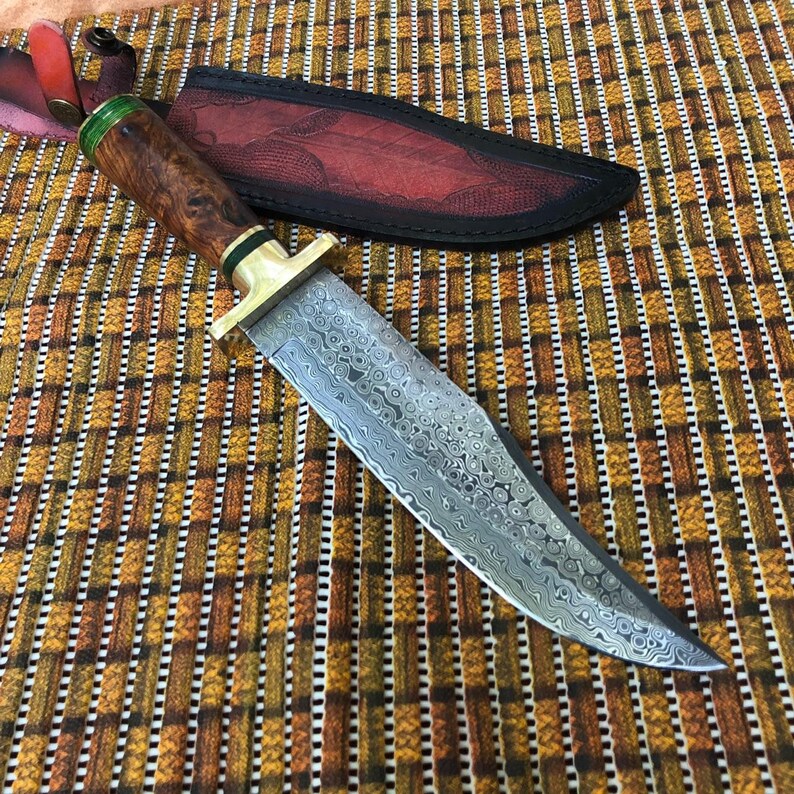
Temper at 350 f 2 times for 1 hour each time Finishing: Preheat furnace to 1925 f Place blade in furnace Allow furnace to cycle back to 1925 f Soak for 10 minutes Quench in oil or Plate quench Quench in Liquid Nitrogen directly after quench for 1 hour. Random, Ladder, Raindrop, Bubblewrap, Twist, Firestorm, Sharkstooth, Spirograph, Vines & Roses, Composite Bar, Fireball, Basketweave, Dot Matrix, Herringbone, and Reptilian Heat Treating: I promise to deliver that love and excitement in a bar made for you. I have found the making of damascus steel to be an incurable disease, the addiction won't go away! I dream at night of new patterns and new steel combinations. Now, after making over 10,000 bars of damascus, I have learned all of the ins and outs of the process. When using the proper stainless steels compromises do not have to be made with corrosion resistance. Carbon steel damascus is much more commonly produced. Making stainless damascus offers many difficulties over producing carbon steel damascus. Stainless damascus of course has the benefit of being stain resistant.

I was among the first to produce stainless damascus, and the first to sell it regularly and commercially. I offer it in many sizes for most any product you may want to produce. I have a variety of steel combinations and patterns available for every application, to a high performance custom knife or a wedding band. I believe my damascus to be the cleanest, most precise, and greatest performing available. I pride myself on producing the highest quality damascus in the world. The applications for the beauty and serendipity of damascus seem to be endless. In the past many years I have begun to find other markets for my damascus, including watches and jewelry. 2004.I have been blessed to become a well known and respected maker of Damascus in the world of cutlery.


Multiple heat, drawing and folding techniques have produced multiple patterns such as waves, droplets, and feathers. for a time at temperature of about 5 to about 12 hours to form a malleable metal. One method the "Damascus" surface pattern used a steel melt comprising about 1.0 to about 2.0 weight % carbon is solidified to form an ingot, the ingot is heated between about 1100 DEG to about 1299 DEG C. However, due to extensive analysis and experimentation, several individuals in modern times have successfully produced several pattern forming hypereutectoid steel blades with visible carbide banding on the surface, consistent with original Damascus Steel. The original methods, techniques, and materials are thought to have been lost.

Tales have indicated the blades could cut through a falling hair. The blades were reputed to be tough, resistant to shattering, and capable of being honed to a sharp, resilient edge. The heterogeneous metal mixture of Iron and steel that was drawn out, folded over, and then welded many times producing wavy patterns in the steel which were enhanced with acid etching, producing their distinctive patterns of banding and mottling reminiscent of flowing water, sometimes in a "ladder" or "rose" pattern. Damascus steel was primarily used for sword blades from ingots of Wootz steel either imported from Southern India or made in production centers in Sri Lanka, or Khorasan, Iran. A very strong, hand-wrought Steel made in Near Eastern and Asian countries from approximately 900 to 1600 CE.


 0 kommentar(er)
0 kommentar(er)
